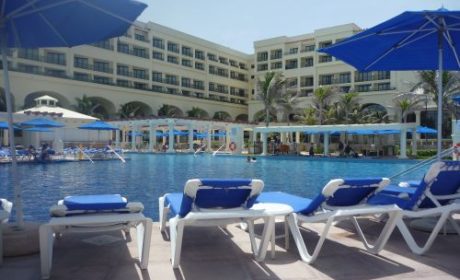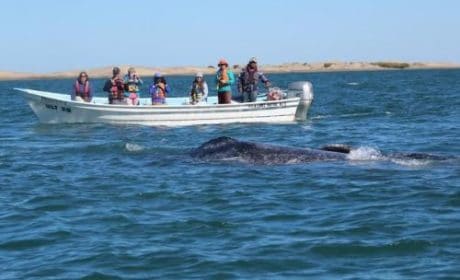San Miguel de Allende is a popular Mexican destination for many Americans and art lovers. The colorful town, and region, is packed with enough things to see and do that 3 days barely scratches the surface of what to experience. But active boomer travelers must make the best use of the time they have even if it’s only 3 days.
Debi Lander of ByLanderSea, shares her tips for visiting this charming destination that includes a UNESCO World Heritage site plus wonderful food and culture. if you’re looking for a San Miguel de Allende 3-day itinerary, keep reading!
The colorful city of San Miquel de Allende, Mexico, frequently popped up on my travel radar and caused me to inquire. Several prominent organizations named San Miquel the Most Beautiful City in the World, and other sites noted it for outstanding photographic opportunities.
I was intrigued, so I added the destination to my wish list. When the opportunity to visit Mexico City materialized, I jumped at the chance to fit 3 days in San Miquel into my Central Mexico itinerary.
During the 20th century, San Miquel de Allende gradually transformed into an artists’ colony, attracting Mexican and foreign artists, writers, and musicians. Its unique colonial and Spanish architecture, vibrant culture, and affordable cost of living made it an attractive destination for artists and expatriates seeking inspiration and a bohemian lifestyle.
Lucky for me, my friend Peggy and her husband belonged in that group. They now owned a home in the suburbs of San Miquel de Allende, and I would spend a few days and nights with them.
Table of Contents
How to get to San Miguel de Allende
I flew to Mexico City (research flights here) and transferred to a shuttle for a four-hour ride to San Miquel. We headed out after the driver picked me and a few others up at the airport. The van dropped me at Peggy’s home and the others at their hotels. The plan couldn’t have worked any better.
Boomer Travel Tip
Getting to San Miquel de Allende takes work. The closest airport, Del Bajio Airport in Leon, is about one and a half hours away but usually involves flying from Mexico City.
3 days in San Miquel de Allende
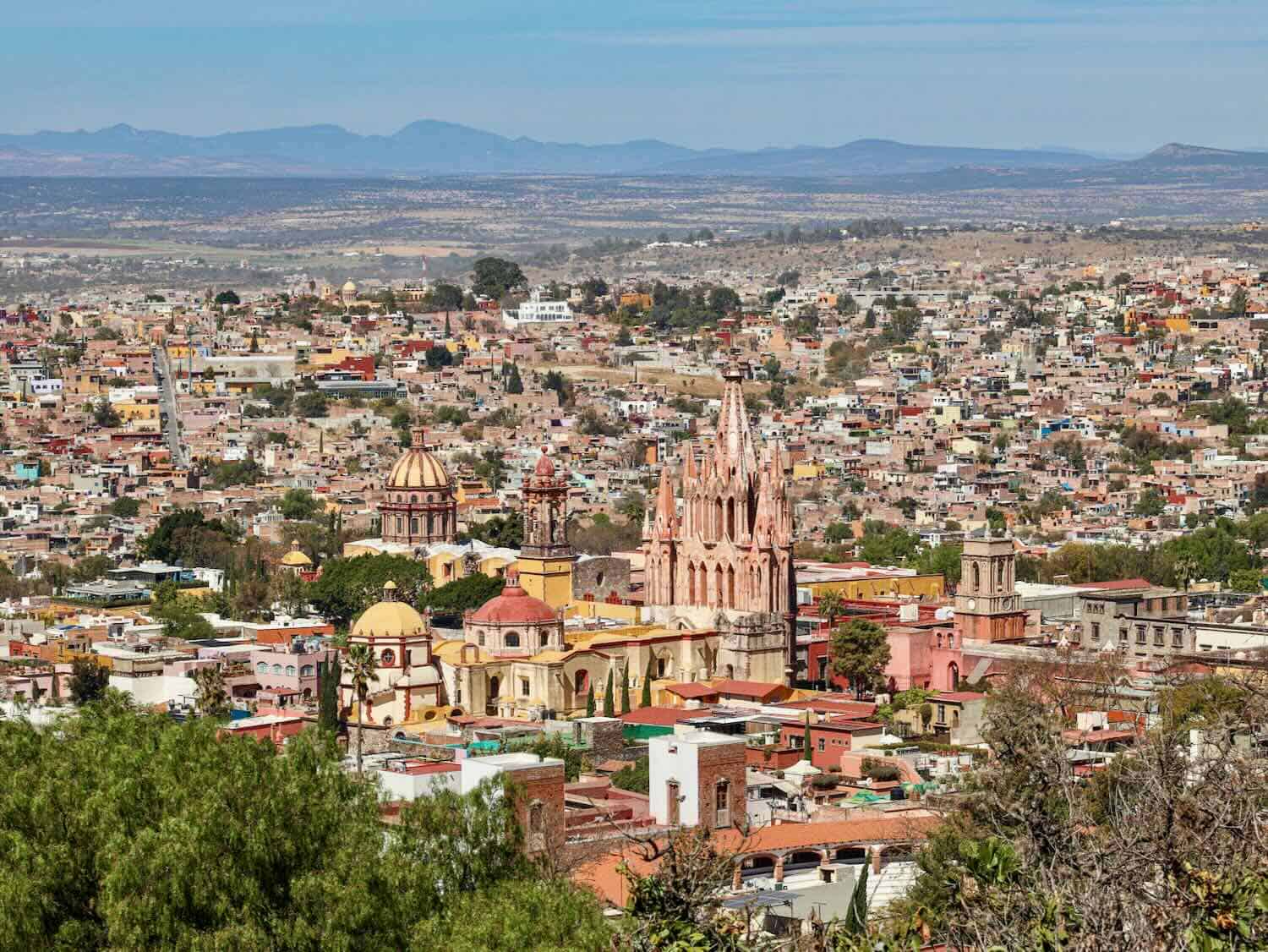
Peggy wanted me to see the local market where many Mexican residents and others shop. It’s held only on certain days of the week, and the next morning was one.
We drove to the permanently tented location outside the historic district and found it bustling with activity. Everything imaginable was on sale at what looked like a giant flea market: used and new household appliances, gadgets, clothing, shoes, plants, local produce, food stations, and crafts. I felt overwhelmed, but the marketplace gave me a taste of the non-touristy part of town.
We stopped at a scenic overlook on the way down to the historic district. Church domes and steeples stood out in the vibrant city below. It rests on a hill surrounded by mountains.
Most days, the downtown remains crowded, and walking is the best way to get around. Peggy parked in a lot where cars squeezed in with less space between them than the teeth in my mouth. Incredible!
Spend a day in the Historic District of San Miguel
San Miguel de Allende was founded in 1542. It acted as a stopover on the Antiguo Camino Real, part of the old silver route from Zacatecas.
In 1938, the historic district was declared a national monument. It rose to UNESCO World Heritage site status for its well-preserved historic center and outstanding cultural value in 2008.
Also included in the same UNESCO listing is the Sanctuary of Jesús de Nazareno de Atotonilco, a nearby Jesuit sanctuary renowned for its Baroque art and architecture.
Stroll cobblestone streets
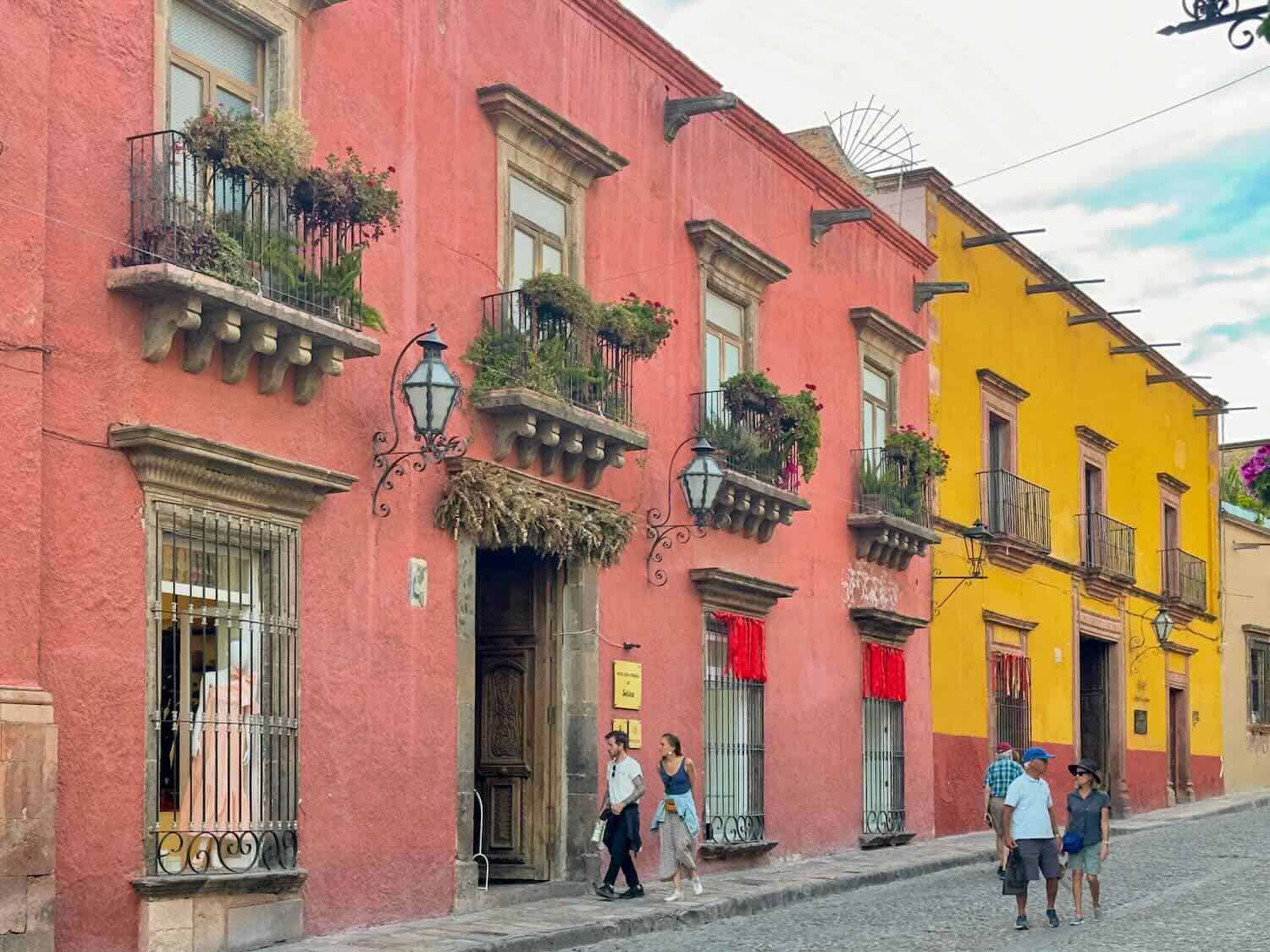
As we strolled the cobblestone streets, each corner produced a stunning scene, from terracotta-fronted churches to shop doorways adorned with swags of flowers and galleries bursting with original art. We explored the churches and shopped in the arts and crafts market, where you can find many heart-shaped decorative pieces to hang on walls.
The shopkeeper said, “The sacred heart was declared the symbol of San Miguel de Allende.”
Stop for lunch at Los Milagros
We walked along while I took photos and browsed until our tired feet and backs needed a stop for lunch. Peggy picked Los Milagros, a restaurant with rooftop seating. Along with the seated respite, we relished some great guacamole and chips, a tasty margarita, plus unforgettable views of the monuments, parks, and people below.
San Miguel de Allende packs a diverse food scene with a mix of traditional Mexican cuisine and international flavors. You’ll also find local specialties such as tequila and mezcal.
Study art at Belles Artes Cultural Center
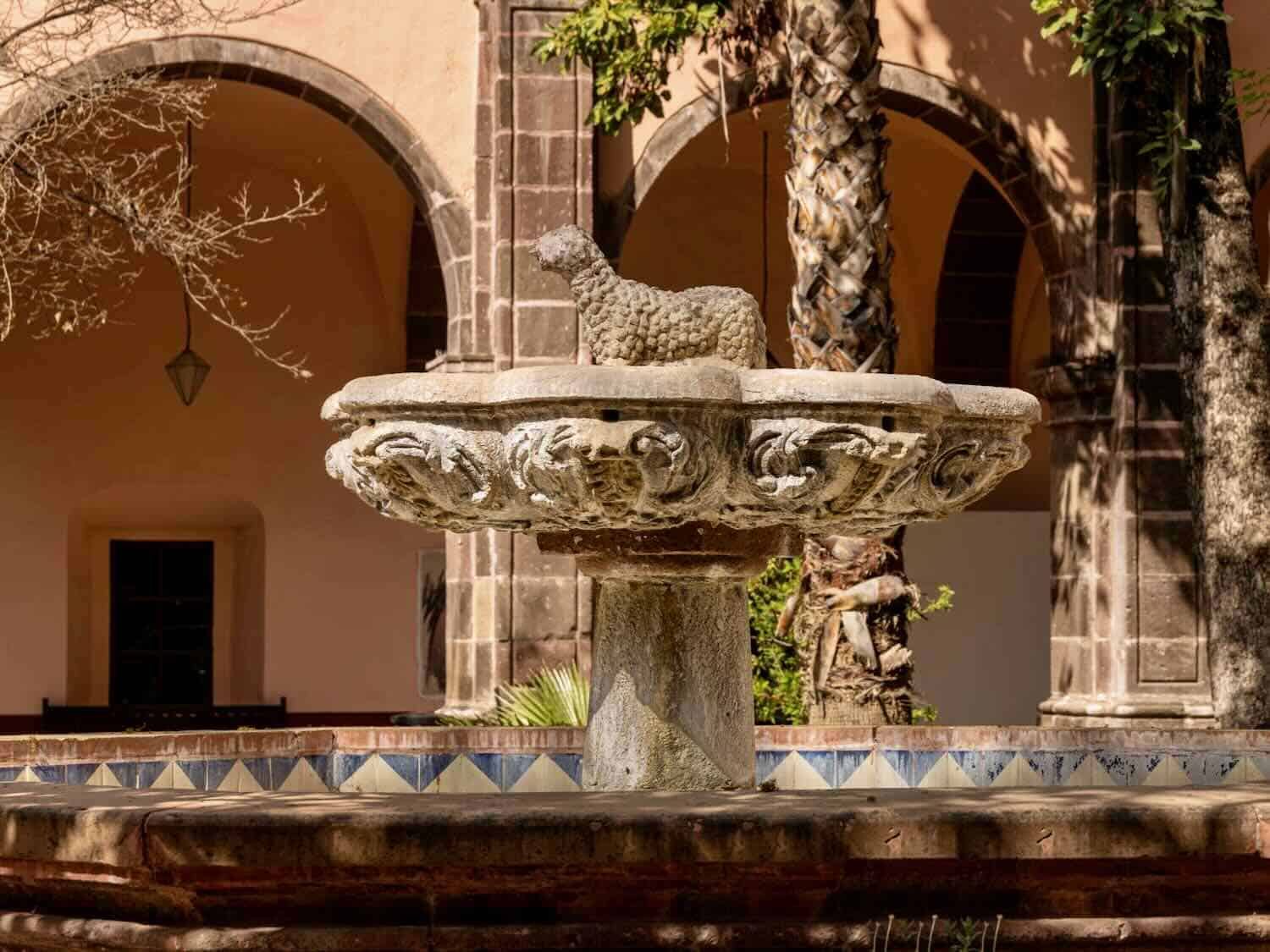
Afterward, we visited the Belles Artes Cultural Center in a tranquil courtyard of a former cloister. Arch walkways partially hide large murals like those painted by Diego Riviera or New Deal WPA workers. A lamb tops the central fountain reminding all that these are convent grounds.
Stirling Dickinson, an American credited with helping establish San Miquel de Allende as an arts center, became the school’s director. He invited a celebrated Mexican muralist, David Alfaro Siqueiros, to paint and teach.
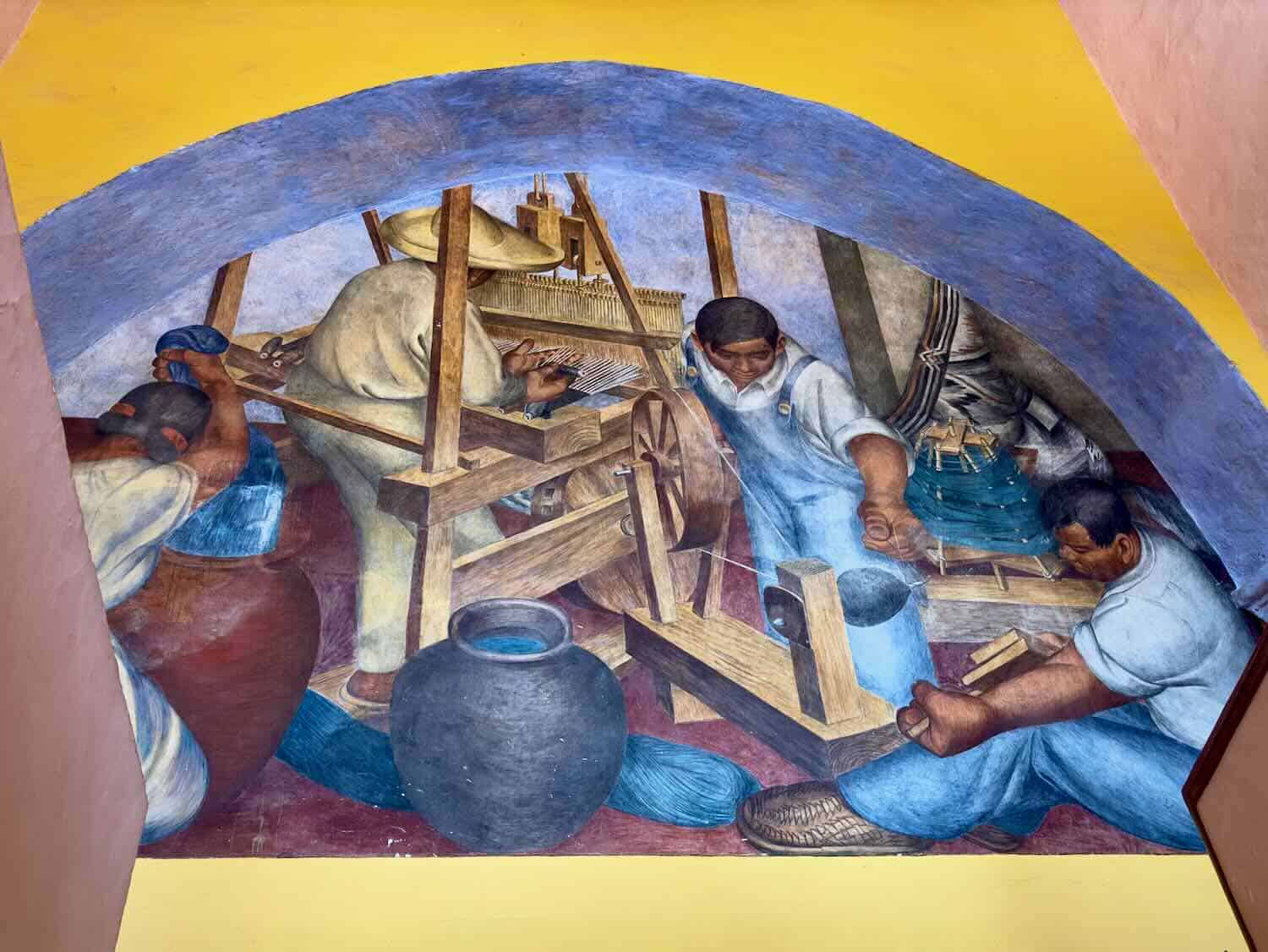
However, Siqueiros left his main work unfinished. To see it, you enter a cavernous room, the former dining hall, and find painted geometric shapes, scrolling lines, and flames shooting and exploding surrounding you. It’s unexpected and unusual. The outside murals painted by various artists were more to my liking.
Visit Casa Museo de Ignacio Allende
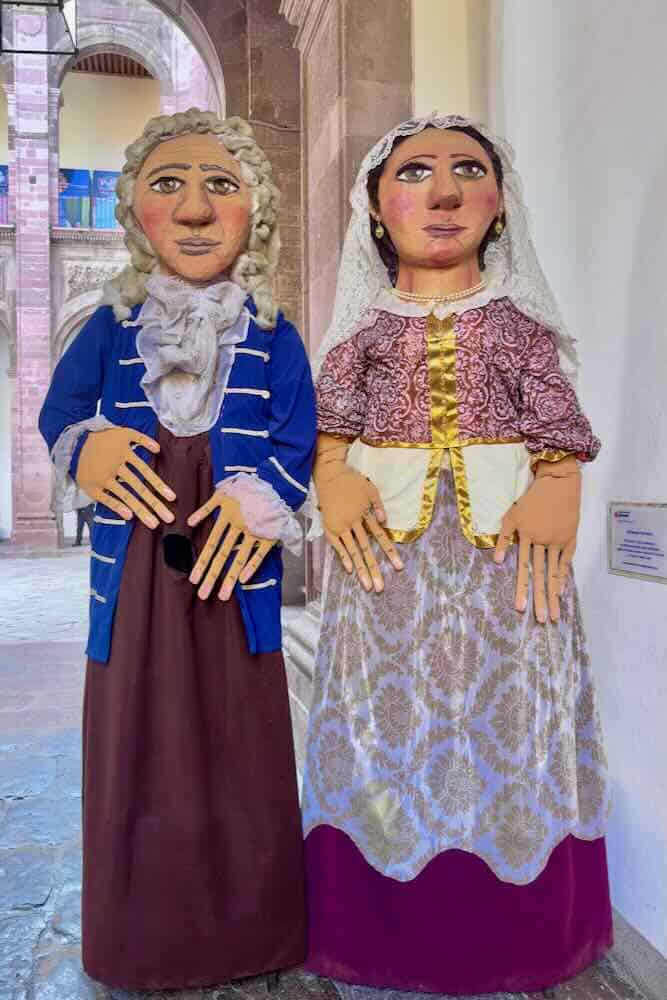
We breezed through Casa Museo de Ignacio Allende: a museum showcasing the birthplace of Ignacio Allende, one of the heroes of Mexico’s War of Independence. His last name is why the ‘de Allende’ was added to the city’s name. The museum highlights his life and times as well as the town’s history.
Celebrate a sunset at El Jardin
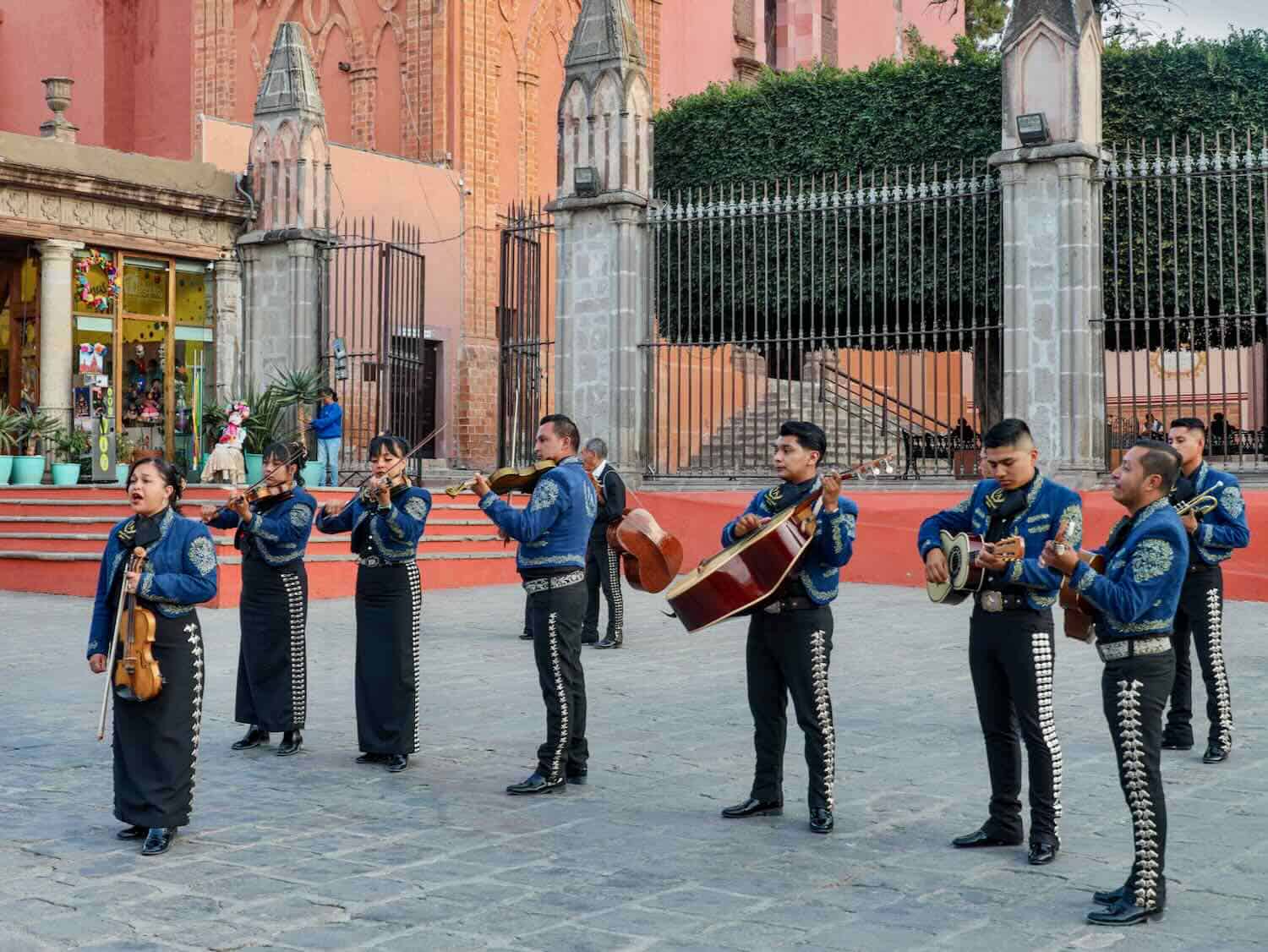
Finally, we made our way to see El Jardín in front of Parroquia de San Miguel Arcangel, the iconic church in the central square of San Miguel de Allende. The garden plaza, lined with manicured laurel trees, becomes a friendly gathering place, especially at sunset. Mariachi bands arrive and play for the visitors and locals who sit back and bask in the moment.
Explore Parroquilla, the wedding cake church
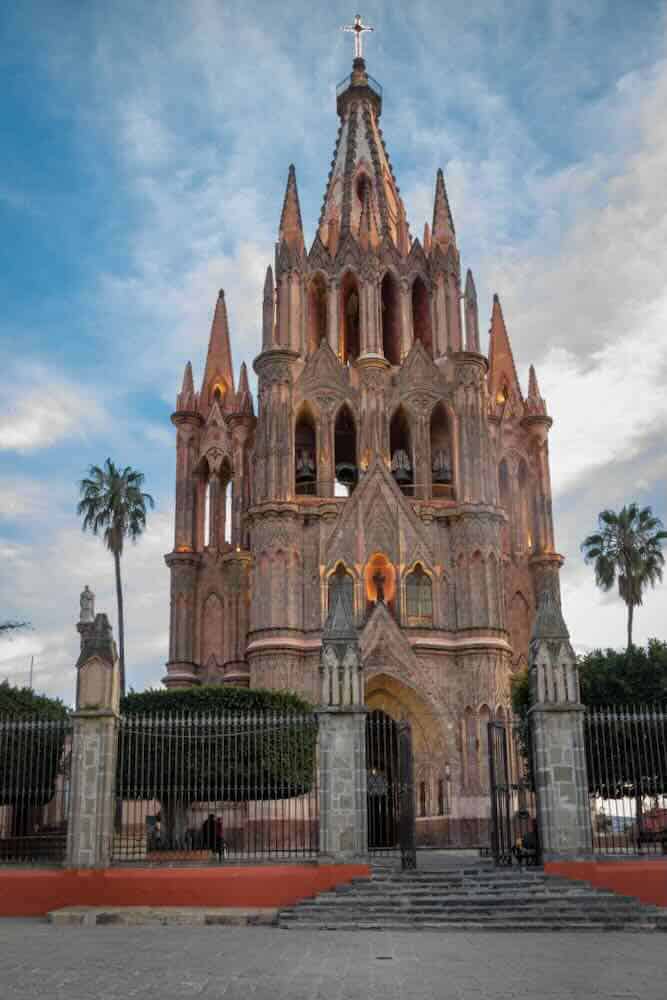
The magical, castle-like, pink Parroquia, often called the wedding cake, is a neo-Gothic church, the town’s most recognizable landmark dedicated to Archangel Michael. Franciscan friars first built an original small, humble parish on the site in the 16th century.
In the 18th century, the church was rebuilt in the Baroque style, with a more substantial stone structure and ornate decoration. However, an earthquake in 1803 damaged the church.
The current building, with its distinctive pink towers and Gothic Revival style, arose in the late 19th and early 20th centuries. Postcards of European churches inspired a local stonemason, and sight unseen, he incorporated those elements into his church design. It is even more beautiful around sunset when the lights produce glowing illumination.
We began our way home after exploring the church interior and chapel. During the day, I noticed numerous statues adorned the Mexican church interiors. Many depicted great suffering, and the figures wore clothes not part of the sculpture.
The next day I headed off on a day trip to Guanajuato by bus, another UNESCO city. It’s a fabulous location, but it needs another entire blog post.
On day 2, visit La Gruta Hot Springs and beyond
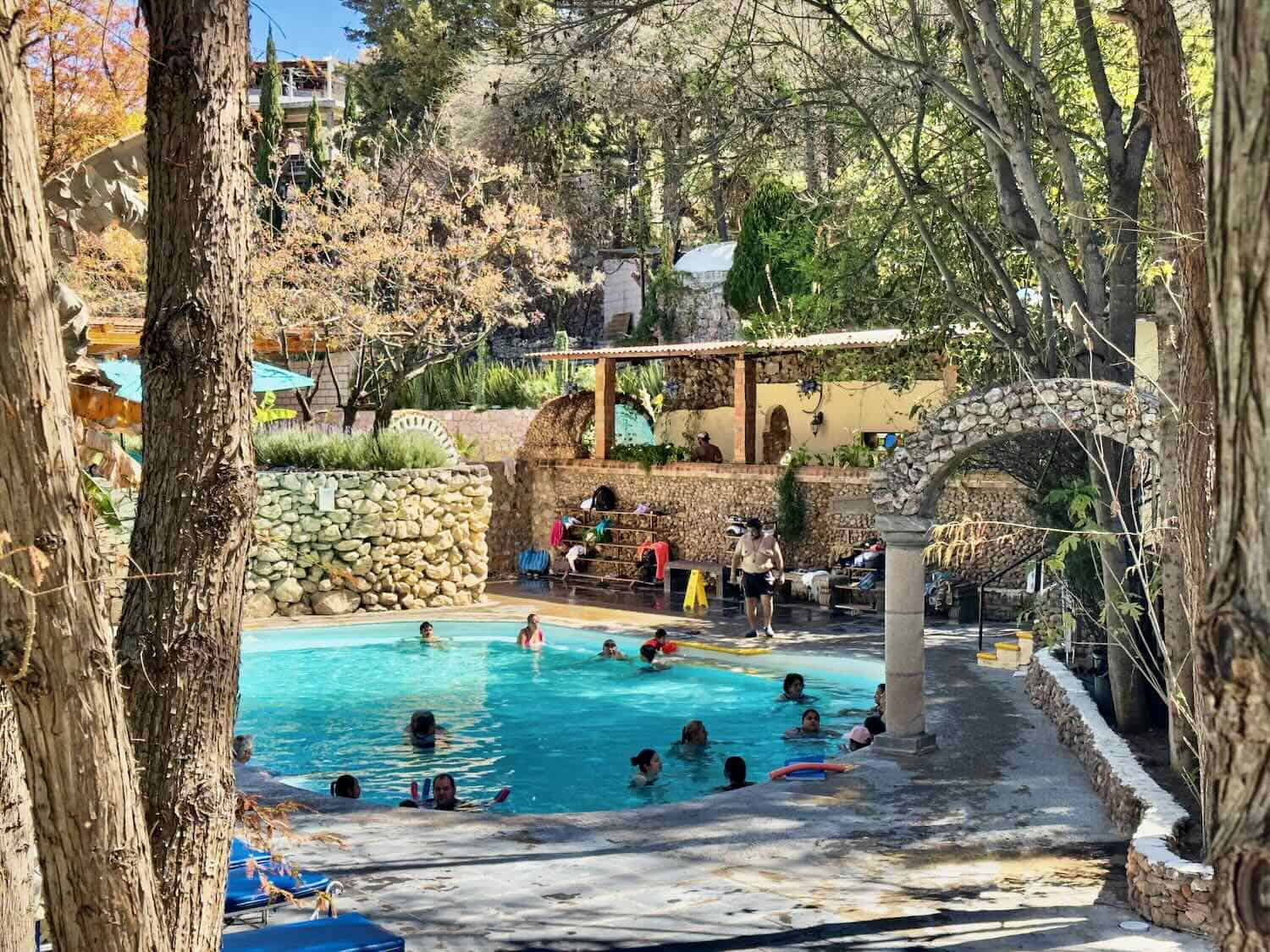
Instead of again exploring the city as a tourist, Peggy, Peter, my friend Ellen who also happened to be in San Miquel, and I went to La Grunta Hot Springs for a relaxing dip. The laid-back attraction includes open-air pools and a steamy grotto just 20 minutes outside San Miguel de Allende.
The proper treatment is to plunge into the series of pools that gradually get warmer and warmer. The soothing water surrounds you like a mega jacuzzi.
One area includes a darkened tunnel to an inner sanctuary. I walked through the chest-high water in the tunnel, but the inner sanctum was very hot. I returned to the outdoor pool.
Peggy and Peter often like to go to the hot springs, and I can understand why. It’s very soothing for the mind and body.
Boomer Travel Tip
The hot springs are close enough for those staying in downtown hotels to take a taxi. The facility includes a snack bar and changing area.
Explore the artistic beauty and religions significance of Atotonilco
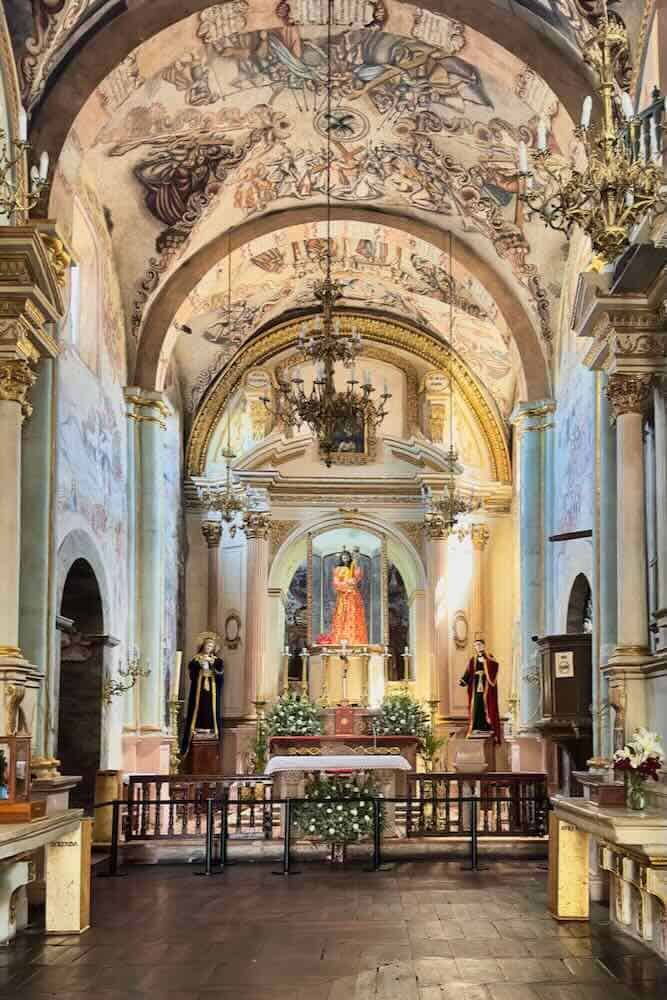
We continued the Zen moments with a visit to Santuario de Atotonilco, the UNESCO World Heritage site listed with San Miquel. Atotonilco remains a traditional pilgrimage town dominated by the church complex built in the 18th century.
Legend claims Father Luis Felipe Neri de Alfaro saw a vision of Jesus with a crown of thorns on his head, blood on his face, and carrying a cross. The church contains a much-beloved statue, El Señor de la Columna, “Our Lord of the Column,” with those characteristics.
According to church literature, “Holy Week celebrations include a series of significant events in Atotonilco and San Miquel. Two weeks before Easter, the festivities start with a bang—literally. The first hint that something special is beginning to happen comes with the sound of drums and hymns in the night from the village of Atotonilco, some eight miles from San Miguel.”
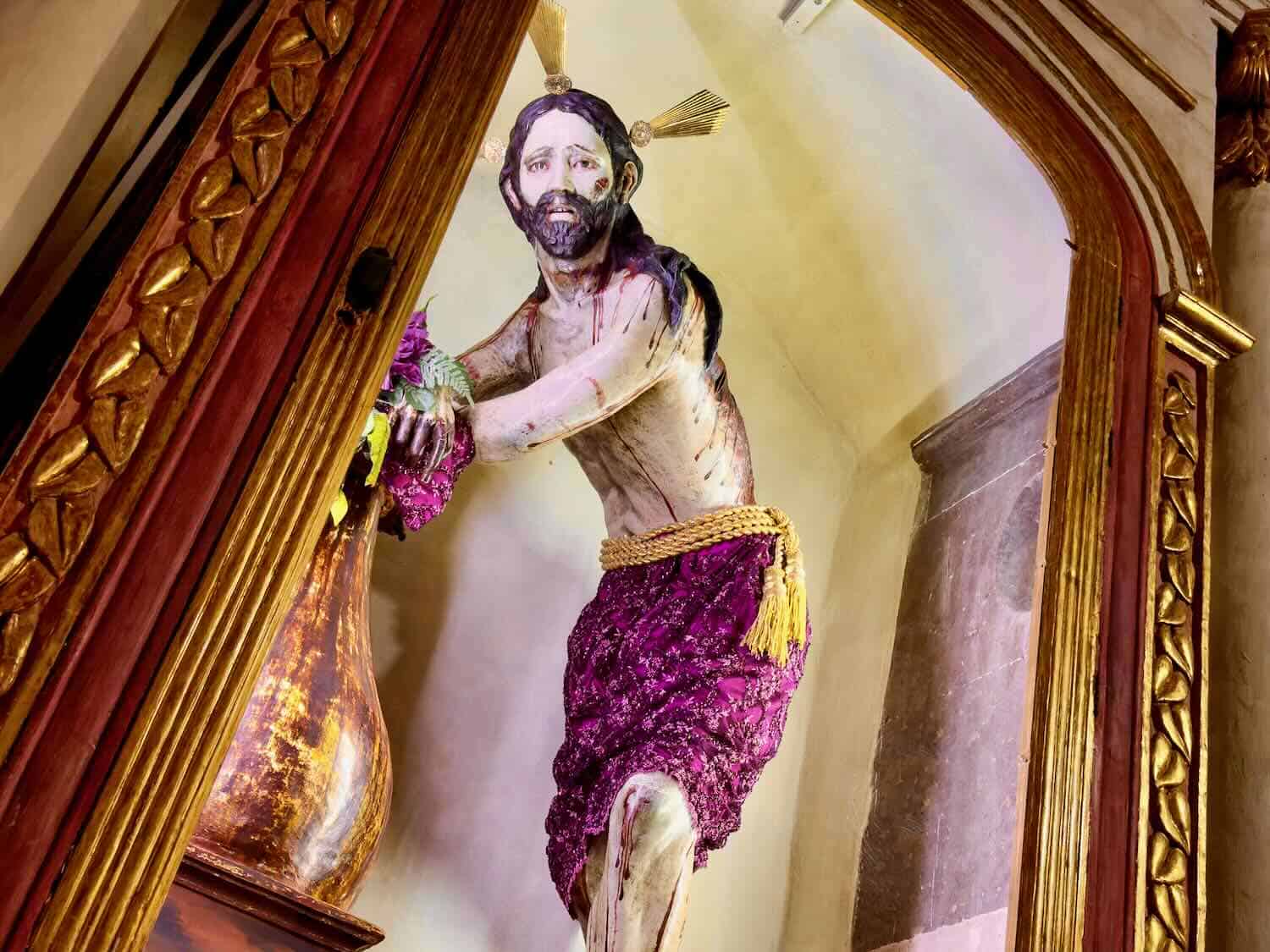
Beginning at midnight, a procession of thousands carries the life-sized statue of the beaten and bloody Christ to San Miguel on the shoulders of the faithful. Christ leans against a column for support. He wears a loincloth, and on his cheek is the kiss of Judas.
Local women drape hundreds of silk scarves across his battered body during the procession. Afterward, the scarves will be removed and safeguarded for funerals and other religious ceremonies later in the year.
Along the way, the statue passes by purple and white paper flowers adorning every home, colored and intricately cut banners called papel picado, and balloons strung on wires across the road.
Anyone willing to show respect is welcome to join the procession that marks the beginning of the events of Holy Week at any point along the route. As the group wends its way toward town, it stops now and then for prayers and hymns. Finally, it enters the northern edge of San Miguel, heading for the San Juan de Dios Church amid the clang of church bells and fireworks.
With the coming of Our Lord of the Column, the season of Semana Santa in San Miguel de Allende has begun!”
Boomer Travel Tip
As dawn nears and the statue gets close to San Miguel, the best spots to watch are at the northern entrance to town (follow the crowd) or at San Juan de Dios Church, where a mass is celebrated at 8 am.
At the conclusion, three days after Easter, more fireworks and music prevail as the statue is carried home to Atotonilco.
I wish I could attend those events, but I was delighted to at least have visited the church. If you know me, you know I love folk art, so you would understand why I love the place. The artistic beauty could bring one to their knees.
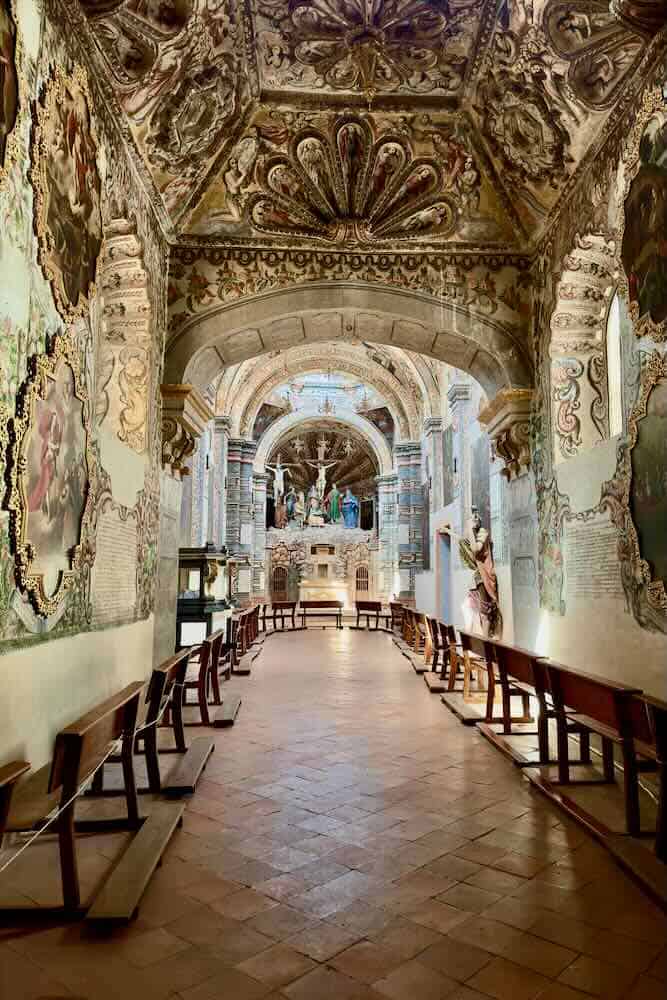
Mexican folk-style Baroque murals, sculptures, inscriptions, and oil paintings cover the walls and ceilings. Over thirty years, Antonio Martínez de Pocasangre painted most of the art with almost no free space left among the numerous images. His works have led the complex to be called the “Sistine Chapel of Mexico.”
Atotonilco remains a place of worship and penance, attracting as many as 5,000 visitors weekly.
The Sanctuary of Atotonilco also played an important role in the fight for Mexican independence. During the Mexican War of Independence in the early 19th century, the sanctuary became a rallying point for insurgents seeking to overthrow Spanish rule. It served as a place of refuge and inspiration for revolutionaries.
Nirvana Restaurant Retreat
In keeping with the relaxed day, Peggy knew the Nirvana Restaurant Retreat was nearby. The sprawling property, surrounded by art, includes an outdoor sculpture park. We ate a scrumptious meal on the patio, and I highly recommend a getaway to the pleasing location.
Dolores Hildago
But we weren’t done yet. We stopped to buy some pottery in the Talavera style, famously made in the city named Dolores Hildago. I had to restrain myself; the prices were so affordable, and the pottery so enticing.
In the town center, we also went into the massive cathedral, Parroquia de Nuestra Señora de los Dolores. Here, parish priest Father Miguel Hidalgo rang the church bell on September 16, 1810. He started the official call to arms against the Spanish, and while Hidalgo was unsuccessful, by 1824, the movement he started would eventually result in an independent Mexico.
Be sure to walk down to the cathedral’s altar and look right and left. Two additional floor-to-ceiling altars are intricately carved from wood. One is left natural, and the other is covered in gold leaf.
Evening in San Miquel de Allende
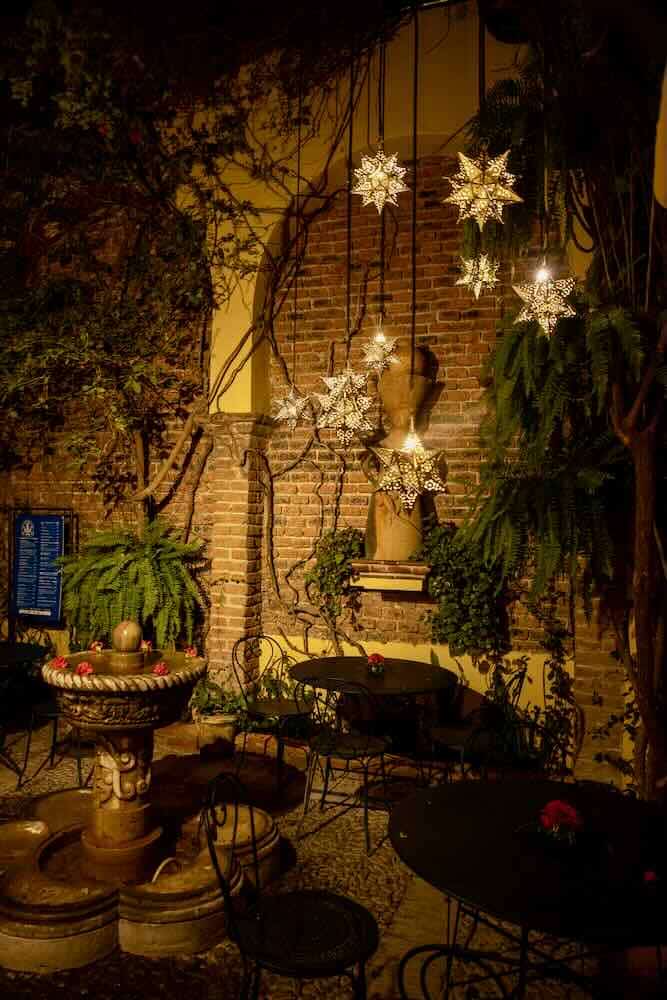
I had not photographed San Miquel in the evening, so I remained downtown with my friend Ellen, who was staying at a new boutique hotel named NUMU.
The colorful streets, shops, and courtyards become even prettier with the glow of street lights and lanterns. The pink cathedral is a stunning centerpiece and worthy of praise.
The central plaza only gets a little of the sunset view, but mingling around is a joy. San Miquel de Allende is a city best enjoyed at a slower pace.
Later, Ellen and I went to the Rosewood Hotel, the priciest hotel in town, for a rooftop drink and snack at Luna. Unsurprisingly, it costs more than a full dinner elsewhere, but the panoramic view is worth the price.
The hotel uses many pierced lanterns that create dancing lights. The effect is very pleasing. Even if you don’t go at night, the hotel grounds are photo-worthy during the day.
My Last Day
I decided to retrace my steps early the following morning, shooting photos in the historic district with far fewer people.
Around 9:30, a crowd began gathering near the central park. I inquired and found out volunteers were giving tours. I donated the appropriate amount and joined in. While I learned many things, I found my guide challenging to understand and dropped out of the two-hour experience early.
Ellen and I enjoyed lunch at El Encanto, a popular and reasonably priced restaurant with excellent Mexican fare. I shopped in the lower area of town with numerous galleries. I eventually returned to Peggy and Peter’s home for my last night in San Miquel.
San Miquel and Guanajuato are absolutely worth a visit and rarely disappoints. They are not just sites to tour but cities to indulge in art and beauty. Slow down to fully embrace the region.
Where to stay in San Miguel de Allende
San Miquel offers an abundance of hotel choices. Choose downtown lodging so you won’t need a car or taxi.
Rosewood is a genuinely superlative, 67-room luxury oasis near the Jardin Allende. I might never leave this hotel if I were staying there. It’s gorgeous except for the price!
NUMU, a boutique hotel associated with Hyatt, offers 44 rooms with a private terrace or balcony. It’s ideal location (across the street from the Rosewood) makes for easy walking to the central historic district. The hotel includes a private garden, spa, bar, restaurant, and modern luxury.

